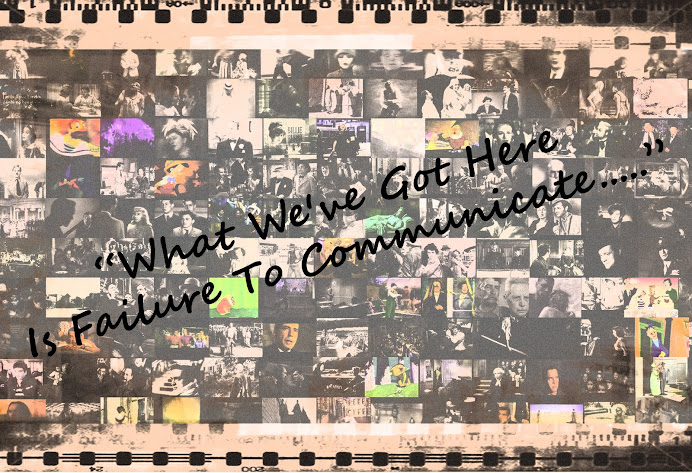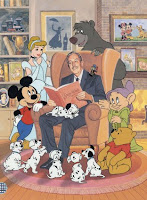With the changing of Facebook profile pictures to your favourite Disney character due to Disney Doppelganger week, the new release of Disney’s Princess and The Frog that has been beautifully animated in the old style hand drawn way Disney is famous for. Such motion pictures that we as children of such classics as The Lion King, Jungle Book and Bambi cannot forget. I don’t know how you feel this week but if you are in that nostalgic mood I can’t shake off then come with me and I will tell you about a legend that is responsible for this week.
Walter Elias Disney was born on December 5, 1901 to Elias Disney, of Irish-Canadian descent (Another legend we could easily claim, no?), and Flora Call Disney, of German-American descent. Walt was one of five children, four boys and a girl. Raised on a farm near Marceline, Missouri, Walt became interested in drawing at an early age, selling his first sketches to neighbours when he was only seven years old. At McKinley High School in Chicago, Disney divided his attention between drawing and photography, contributing both to the school paper. At night he attended the Academy of Fine Arts.
During the fall of 1918, Disney attempted to enlist for military service (What a disaster that would have been). Rejected because he was only 16 years of age, Walt joined the Red Cross and was sent overseas, where he spent a year driving an ambulance and chauffeuring Red Cross officials. His ambulance was covered from stem to stem, not with stock camouflage, but with drawings and cartoons (You don’t see something like that coming from Castlebar hospital, do you!).
After the war, Walt returned to Kansas City, where he began his career as an advertising cartoonist. Here, in 1920, he created and marketed his first original animated cartoons, and later perfected a new method for combining live-action and animation.
In August of 1923, Walt Disney left Kansas City for Hollywood with nothing but a few drawing materials, $40 in his pocket and a completed animated and live-action film. Walt's brother, Roy Disney was already in California, with an immense amount of sympathy and encouragement, and $250. Pooling their resources, they borrowed an additional $500, and constructed a camera stand in their uncle's garage. Soon, they received an order from New York for the first "Alice Comedy" featurette, and the brothers began their production.
On July 13, 1925, Walt married one of his first employees, Lillian Bounds (She is more important than you think, just not yet), in Lewiston, Idaho. No more than three years later in 1928 did Walt begin to create a new character after losing the rights to Oswald the lucky Rabbit. This character was the one we all know and love called ‘Mortimer Mouse’. Walt had almost began to animate Mortimer Mouse until one day he and his wife where travelling on a train where a stranger had conversed with Walt about his new creation but however disliked the name Mortimer. The stranger had instead suggested the name Mickey instead. Walt originally dismissed this name until days later, Walt’s wife, convinced him that the name Mickey just fitted better and that was that. In 1928 Mickey Mouse was born (Told you she was important).
Mickey and his talents were first used in a silent cartoon entitled "Plane Crazy." However, before the cartoon could be released, sound burst upon the motion picture screen. Thus Mickey made his screen debut in "Steamboat Willie," the world's first fully-synchronized sound cartoon, which premiered at the Colony Theatre in New York on November 18, 1928 to the world and things just seemed to snowball after that.
Walt's drive to perfect the art of animation was endless. Technicolor was introduced to animation during the production of his "Silly Symphonies." In 1932, the film entitled "Flowers and Trees" won Walt the first of his 32 personal Academy Awards (How many people can say that!). In 1937, he released "The Old Mill," the first short subject to utilize the multiplane camera technique (That’s just for film buffs right there).
 On December 21 of that same year, "Snow White and the Seven Dwarfs," the first full-length animated musical feature, premiered at the Carthay Circle Theatre in Los Angeles. It was produced at the unheard cost of $1,499,000 during the depths of the Depression. Walt’s drive to excel in animation led him to bankruptcy twice as the film was revised numerous times till Walt was happy with the finished product. The film is still accounted as one of the great feats and imperishable monuments of the motion picture industry grossing $66,596,803. In the depths of the depression this was astounding. During the next five years, Walt completed such other full-length animated classics as Pinocchio, Fantasia, Dumbo, and Bambi.
On December 21 of that same year, "Snow White and the Seven Dwarfs," the first full-length animated musical feature, premiered at the Carthay Circle Theatre in Los Angeles. It was produced at the unheard cost of $1,499,000 during the depths of the Depression. Walt’s drive to excel in animation led him to bankruptcy twice as the film was revised numerous times till Walt was happy with the finished product. The film is still accounted as one of the great feats and imperishable monuments of the motion picture industry grossing $66,596,803. In the depths of the depression this was astounding. During the next five years, Walt completed such other full-length animated classics as Pinocchio, Fantasia, Dumbo, and Bambi.Disneyland, launched in 1955 as a fabulous $17 million Magic Kingdom, soon increased its investment tenfold. By its third decade, more than 250 million people were entertained, including presidents, kings and queens, and royalty from all over the globe.
By the late 1940s, the studio had recovered enough to continue production on the full-length features Alice in Wonderland and Peter Pan, both of which had been shelved during the war years, and began work on Cinderella, which became Disney's most successful film since Snow White and the Seven Dwarfs. The studio also began a series of live-action nature films, titled True-Life Adventures, in 1948 with On Seal Island. Despite rebounding success through feature films, Disney's animation shorts were no longer as popular as they used to be, and people began to instead draw attention to Warner Bros and their animation star Bugs Bunny. By 1942, Leon Schlesinger Productions, which produced the Warner Bros. cartoons, had become the country's most popular animation studio. However, while Bugs Bunny's popularity rose in the 1940s, so did Donald Duck's; Donald would also replace Mickey Mouse as Disney's star character by 1949
As the studio expanded and diversified into other media, Disney devoted less of his attention to the animation department, entrusting most of its operations to his key animators, whom he dubbed the Nine Old Men. During Disney's lifetime, the animation department created the successful Lady and the Tramp (in Cinemascope, 1955), Sleeping Beauty (in Super Technirama 70mm, 1959), One Hundred and One Dalmatian (1961), and The Sword in the Stone (1963). In 1962, after decades of pursuing, Disney finally procured the rights to P.L. Travers' books about a magical nanny. Mary Poppins, released in 1964, was the most successful Disney film of the 1960s and featured a memorable song score written by Disney favorites, the Sherman Brothers.
In late 1966 Disney was scheduled to undergo neck surgery for an old polo injury; he had played frequently at the Riveria Club in Hollywood for many years.On November 2, 1966, during pre-surgery X-rays, doctors at Providence St. Joseph Medical Center across the street from the Disney Studio discovered that Disney had an enormous tumour on his left lung. Five days later, Disney went back to the hospital for surgery, but the tumor had spread to such great extent that doctors had to remove his entire left lung. The doctors then told Disney that he only had six months to a year to live After several chemotherapy sessions, Disney and his wife spent a short amount of time in Palm Springs, California before returning home. On November 30, 1966, Disney collapsed in his home, but was revived by paramedics, and was taken back to the hospital, where he died on December 15, 1966 at 9:30 a.m., ten days after his 65th birthday. He was cremated on December 17, 1966 and his ashes reside at the Forest Lawn Memorial Park in Glendale, California. Roy O. Disney continued to carry out the Florida project, insisting that the name be changed to Walt Disney World in honor of his brother.
The final productions in which Disney had an active role were the animated feature The Jungle Book released in 1967. Songwriter Robert B. Sherman said about the last time he saw Disney:
''He was up in the third floor of the animation building after a run-through of The Happiest Millionaire. He usually held court in the hallway afterward for the people involved with the picture. And he started talking to them, telling them what he liked and what they should change, and then, when they were through, he turned to us and with a big smile, he said, 'Keep up the good work, boys.' And he walked to his office. It was the last we ever saw of him. ''
Even in his death Disney continued to make films and grow. The most famous film produced by Disney studios, The Lion King made in 1994, had of course no involvement by Walt Disney due to his death 27 years prior to this and yet is the first film to come to mind of anyone when asked to name a film by Disney. Hercules, The little Mermaid, Aristocats, Aladdin and Beauty and The Beast all created in the 70s, 80s and 90s and all of them are simply testament to Walt’s inspiring life and his trust in those he left behind to carry on the good will of his name.
Walt Disney is a legend and a folk hero of the 20th century. His worldwide popularity was based upon the ideas which his name represents: imagination, optimism and the freedom of expression. Walt Disney did more to touch the hearts, minds, and emotions of millions of children around the world than any other person in the past century. Through his work, he brought joy, happiness and a universal means of communication to every child and adult as far and wide as he could reach. This is me, once a child graced by the magic of Disney, thanking a legend that cannot be forgot, that cannot be replaced and Certainly, our world shall know but one Walt Disney.
‘’Here you leave today and enter the world of yesterday, tomorrow and fantasy’’





Great post, disney definitely dominated my childhood. Bambi, The Lion King, Snow White, The Jungle Book, The Beauty and The Beast, The Aristocrats, Hercules, the list goes on and on. However,that's not all, we grew up through the pixar generation too!
ReplyDelete